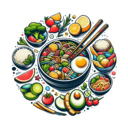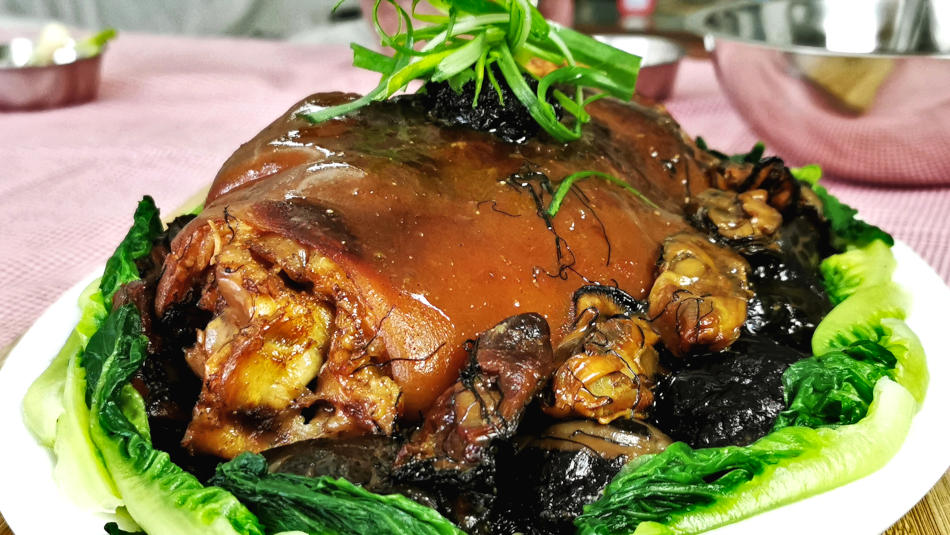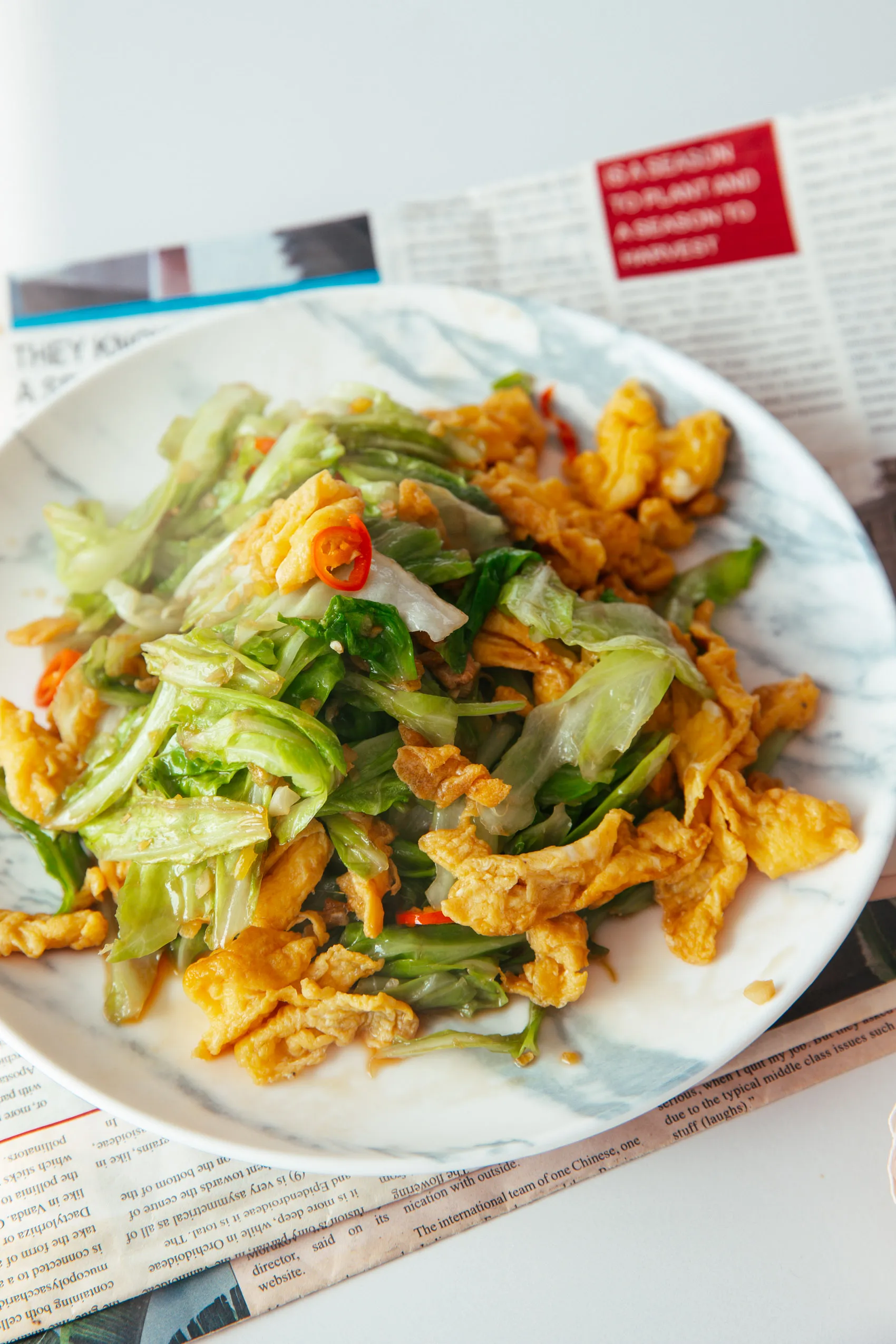Braised pork knuckle with fat choy, dried mushrooms, and dried oysters is a traditional dish celebrated during Chinese New Year among Cantonese families. Known as 橫財就手 in Cantonese, it symbolizes ‘a windfall of good fortune.’
As the New Year approaches, families around the globe will come together to enjoy a sumptuous feast, and my family is no exception. I’ve prepared this classic Chinese dish ahead of time for the festivities, as it freezes well and tastes even better the next day when the pork knuckle has fully absorbed the flavors of the sauce.
May this pork knuckle bring you prosperity and happiness in the upcoming year. Let me guide you through the preparation of this delightful dish, a staple for the Lunar New Year. Be sure to source it from your local Asian butcher and get ready to impress your family!
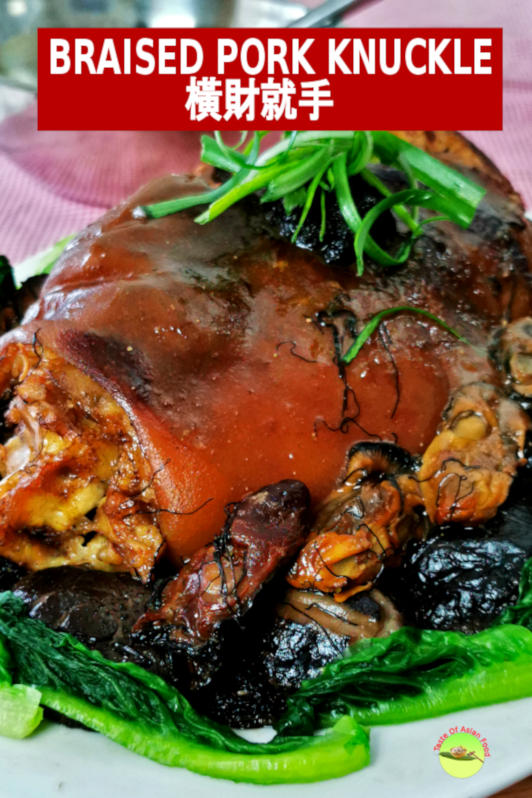
Note: This post may contain affiliate links. Please read my privacy policy for more information. I may receive commissions for purchases made through links in this post. As an Amazon Associate, I earn from qualifying purchases.
Ingredients for Braised Pork Knuckle for Chinese New Year
The following are the main ingredients for braised pork knuckles, excluding some less significant components.
- Pork Knuckle: This is the ideal cut for this dish, although you can opt for a leaner cut if you prefer a healthier option.
- Ginger, Green Onion (Scallion), and Wine: Essential flavor enhancers used in various braised meat recipes.
- Bay Leaves, Cinnamon, Star Anise: These spices contribute to the Cantonese flavor profile. We also have another pork knuckle recipe featuring different spices available for you to explore.
- Black Moss (Fat Choy, 发菜): An edible alga resembling silky strands, which rehydrates after soaking for 10 to 20 minutes. Clean it thoroughly with water before use.
- Dried Shiitake Mushrooms: Known for their floral aroma, opt for the dried variety as they are more flavorful and have a heartier texture than fresh ones.
- Dried Oysters: These are packed with umami, similar to dried mushrooms.
How to Prepare the Braised Pork Knuckle
- Clean the pork knuckle by rinsing it several times until the water runs clear. Inspect the skin for any hair and remove it using tweezers or a blow torch.
- Place the pork knuckle in a pot and cover it with water. Add a few slices of ginger, two stalks of green onions, and two tablespoons of rice wine to eliminate any unpleasant odors.
- Bring the water to a boil and blanch the pork knuckle over medium heat for ten minutes, turning it at least once. Remove it and rinse under running water, letting it sit for ten minutes to drain.
- Rub a generous tablespoon of dark soy sauce evenly over the pork knuckle. This adds color and caramelizes the sugar during frying, creating appealing charred marks. Allow it to rest for ten minutes to let excess soy sauce drip off.
- Heat about half an inch of oil in a large pan or wok. Carefully place the pork knuckle into the hot oil, expecting some splatter due to moisture. Cover with a lid immediately. Shallow fry for two minutes on each side or until charred marks appear, then remove from the oil.
- Rehydrate the dried shiitake mushrooms by soaking them in water for half a day (or overnight). Hot water can reduce soaking time to about two hours. Once softened, squeeze out excess water and trim off the stems.
- Soak the dried oysters in water for 15 to 30 minutes until softened, then clean each oyster to remove any sand or dirt.
- In a wok or large pan, heat some oil and sauté the green onions, sliced ginger, and garlic cloves over medium heat until fragrant.
- Add the dry spices (bay leaf, cinnamon stick, and star anise) and stir briefly. Place the pork knuckles into the wok, adding enough water to submerge half of the knuckle.
- Incorporate the rock sugar and liquid seasonings (chu hou sauce, light soy sauce, oyster sauce, red fermented bean curd, and rice wine). Bring to a boil, then reduce to a simmer for two hours. Turn the pork knuckle every half hour for even cooking, adding boiling water as needed to maintain the liquid level.
- After two hours, add the dried mushrooms and oysters, along with the mushroom soaking water. Continue braising for another hour, checking for tenderness by piercing the thickest part of the pork knuckle with a chopstick.
- Gradually add the black moss to the liquid and cook for an additional ten minutes before turning off the heat.
- Remove the pork knuckles, mushrooms, black moss, and oysters from the wok, placing them in separate bowls. Strain the braising liquid through a wire mesh for a clean broth. Return the broth to a clean pan, bring to a boil, and reduce if necessary for a thicker sauce. Adjust seasoning as needed.
- To serve: Place the pork knuckle on a large oval plate, arranging the mushrooms, oysters, and black moss around it. Drizzle the sauce over the pork knuckle and garnish with lettuce and scallions. Enjoy the tender meat accompanied by ample gravy.
Tips for Making the Best Chinese Braised Pork Knuckle
- Blanching the pork knuckle effectively removes any unwanted blood odor.
- While blanching helps eliminate smells, frying before braising adds depth of flavor. Deep-frying is common in restaurants, but shallow frying is a more practical method for home cooks.
- Hoisin sauce can substitute for chu hou sauce, and regular sugar can replace rock sugar. Most of these ingredients are available at Chinese grocery stores.
- Monitor the water level during braising; add more if it drops below half of the pork knuckle. Using boiling water helps maintain a consistent temperature.
Are Dried Seafood Safe to Eat?
Concerns exist regarding the safety of mushroom soaking water and black moss. Here’s what I found:
- Mushroom Water: Some readers worry about the safety of consuming this water, which may contain sulfites used as a bleaching agent. While excessive amounts can cause adverse effects, the trace amounts present should be metabolized by the liver without significant health risks. However, you may choose to avoid it based on your comfort level.
- Black Moss: Research indicates that black moss contains beta-methylamino-L-alanine (BMMA), which could affect nerve function. However, it is generally safe to consume in small quantities, especially since it is typically eaten during special occasions like Chinese New Year.
Disclaimer: While I have a background in pharmacy, I have not extensively researched this topic. This information is for your reference only.
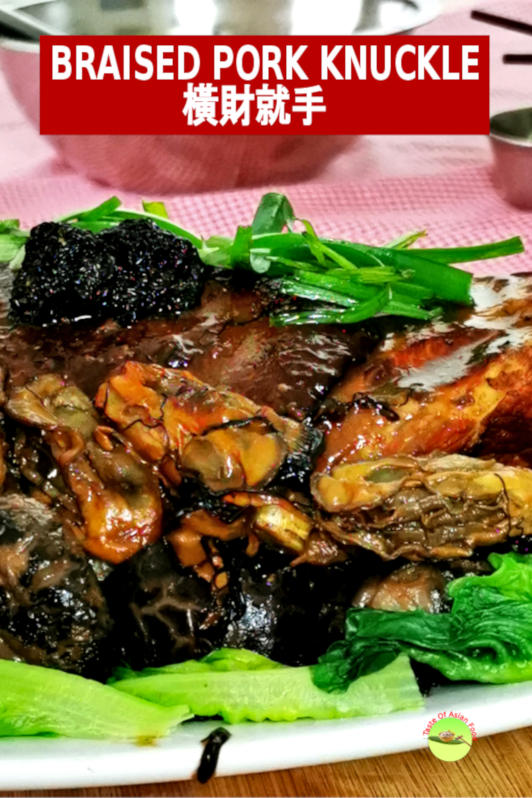
Note:
This recipe is a beloved dish served during Chinese New Year. It is the Chinese equivalent of German ham hock or pork knuckle, but instead of roasting, it is braised with Chinese spices, resulting in tender meat without crispy skin. The accompanying sides include shiitake mushrooms, dried oysters, and fat choy, creating a rich, flavorful experience.
Other Related Recipes
- Braised Chicken with Mushrooms: Quick, easy, and delicious, this freezer-friendly recipe is a staple in Cantonese home cooking.
- Chinese Spareribs: This simplified version of the pork knuckle recipe uses similar herbs and spices, offering a delightful alternative.
